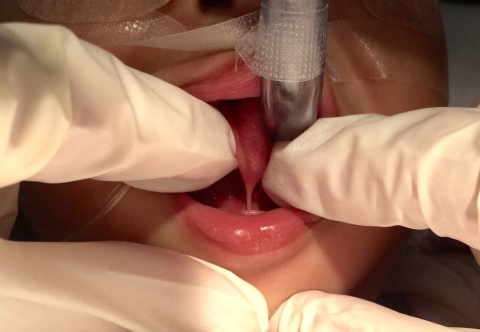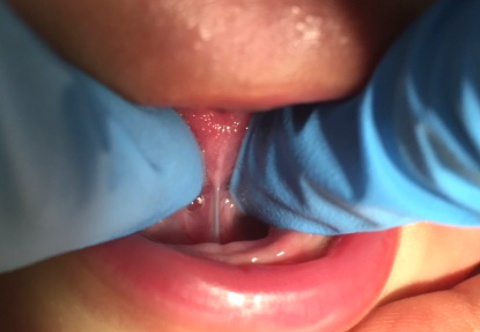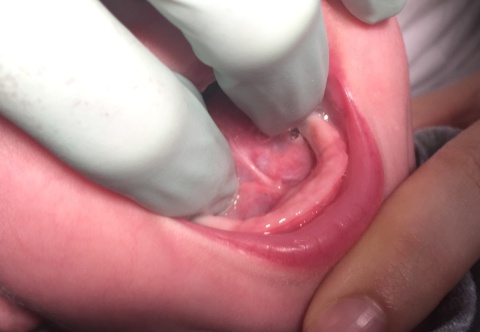Associated problems related to Tongue Tie
When a tongue tie is causing problems with breastfeeding, the baby often does not open his/her mouth widely, thus not latching on to the breast at the correct angle. Instead he/she may latch onto the nipple, and ‘gum’ or chew it, causing severe pain and eventually, nipple damage. There can be cracking, distortion, blanching or bleeding from the nipple, sometimes followed by infection or mastitis. Other symptoms include:
- Difficult attachment onto the breast
- Prolonged feeding times
- Nipple pain or damage
- Recurrent mastitis
- Low weight gain
- Clicking sounds made during feeding
- Swallowing of air while feeding
Delayed development of speech may occur, while the tongue is remarkably able to compensate and many children have no speech impediments due to tongue-tie, others may. Speech problems, especially articulation of the sounds - l, r, t, d, n, th, sh, and z may be noticeable. Although, there is no obvious way to tell in infancy which children with ankyloglossia will have speech difficulties later, the following associated characteristics are common:
- V-shaped notch at the tip of the tongue
- Inability to stick out the tongue past the upper gums
- Inability to touch the roof of the mouth
- Difficulty moving the tongue from side to side
- Deterioration in speech
- Behaviour problems
- Loss of self confidence because they feel and sound ‘different’
- Strong, incorrect habits of compensation being acquired
Opening the mouth widely enough to receive the spoon can be affected by a habit of inadequate mouth opening, the tongue may not protrude over the gum ridge, instead it will hump at the back of the mouth and push the food out rather than draw it in. Other symptoms include:
- Inability to chew age appropriate solid foods
- Gagging, choking or vomiting foods
- Persisting food fads









